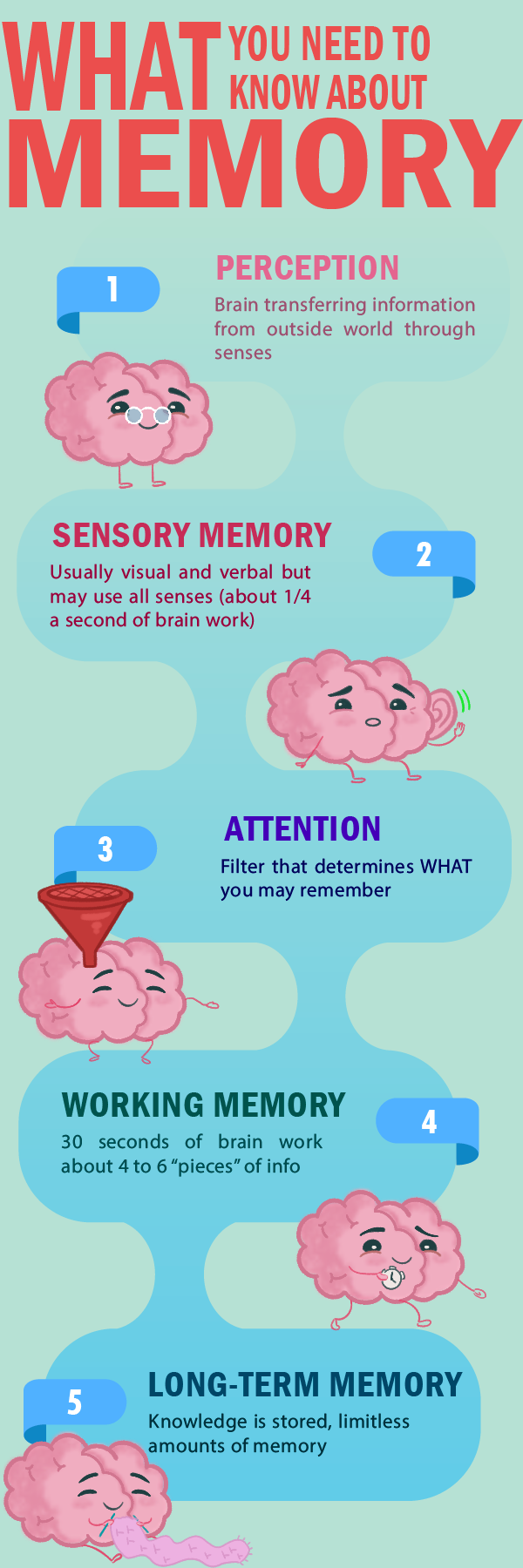9 What you need to know about memory
What you need to know about memory!
To make the most of your understanding of attention, it is important to learn a little about how memory works and the specific role it plays in remembering.
We are constantly making and using our memory. In this diagram, the first piece that is important for making a memory is a process called Perception. Imagine taking a walk down a street filled with restaurants and shops. PERCEPTION is your brain’s ability to take in information from all the senses: sight, sound, touch, taste, and smell, and change it into something you can make sense of. This is a very complex process; however, think of seeing a dog while you are walking or smelling bread from a nearby bakery. Your brain uses cells called neurons to change the sight of the dog and the smell of the bread into a pattern. These patterns are referred to as SENSORY MEMORY. You have about ¼ of a second to decide which of these patterns are important and then ATTENTION, which you already know is a precious resource for memory, filters information from our environments. We are usually left with information we want to focus on. For example, if we love the smell of bread and are hungry, then we may stop in our tracks and go into the bakery. However, because of what we know about attention and distraction, it is possible the dog, who is our favorite breed – a black lab, has caught our eye and we bend down to give it a pet. Before we know it, we have forgotten about food! These decisions happen just before we are aware of them. This type of awareness occurs in what is called WORKING MEMORY. Working memory is our conscious self. The thoughts we have take up our working memory. Like attention, information in working memory can be limited to only a certain amount (a work that Cognitive Psychologists refer to as capacity). Most of us are able to focus on something for about 30 seconds and during this time hold about 4 to 6 pieces of information in our minds at a time.
TRY IT OUT: This is why you can only repeat back so many numbers at a time (for most people it is between 7 and 9). It is also difficult to do complex math problems in your mind because of the limits of working memory. Similarly, it is why we must write down our grocery lists because we can only remember about 4 to 6 items before we forget.
The final stop for knowledge is LONG-TERM MEMORY. This is the goal of everything we learn. We will discuss the process later of how it can take hours and even days to ensure knowledge is long-term. For now, know it is the goal that what we learn becomes stored in long-term memory. This is information that we should be able to remember as long as we want and there is no limit to how much we can remember!
The only limit is that most of us haven’t been given strategies to best store knowledge for the long term.

